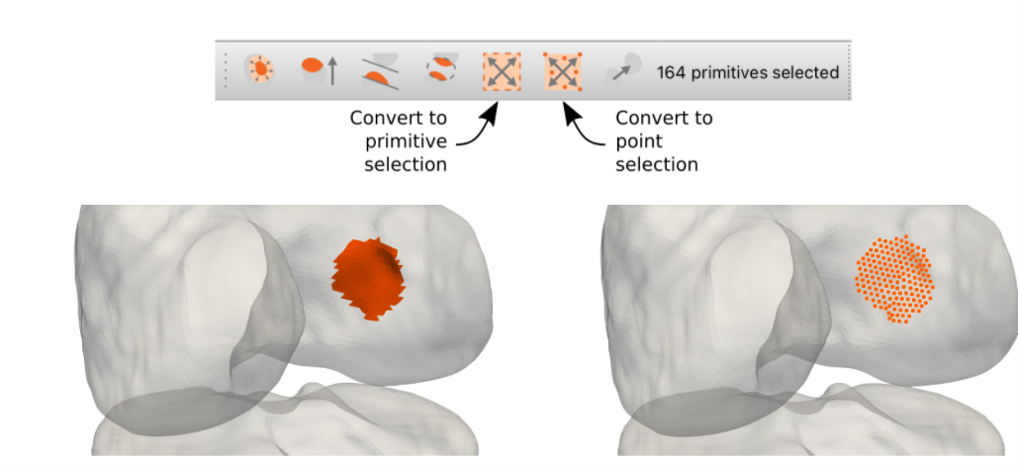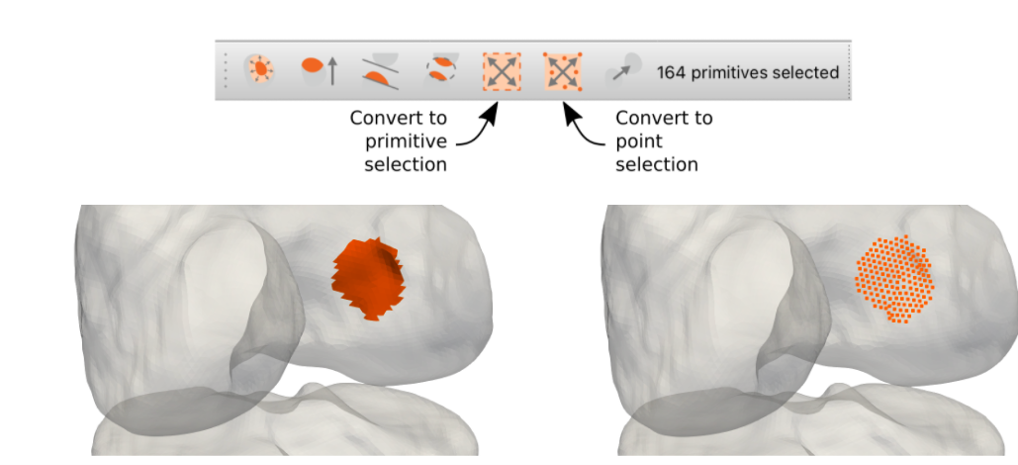aeva 2.1 Released

We are pleased to announce the release of aeva 2.1. aeva is a unified platform that provides a streamlined interface for the generation, modification, annotation, and exchange of anatomy. The aeva application suite contains two applications: aevaSlicer and aevaCMB. aevaSlicer is a platform for comprehensive image segmentation, robust surface geometry generation, and volumetric meshing capabilities. aevaCMB is a platform that provides resources and templates to assign ontology terms (anatomical or otherwise) to organs and tissues.It can also be used for appropriate and efficient labeling of regions and generation of simulation input files that can be loaded to simulation software.
In this 2.1 release, major improvements were made in nodeset selection and the texture atlas generation. FEBio and MED file format exporters have been integrated, different mesh file formats are now supported, and other miscellaneous bug fixes and feature improvements have been made. We also launched a YouTube channel to demonstrate critical features of the software in short video clips.
Release Highlights
- Method to convert node selections into primitive selections

Figure 1. Converting to/from point/primitive selections is now a single click.
While aeva 2.0 focused on support for creating side sets to annotation surface regions, sometimes annotations are needed on points (a.k.a. nodes in some communities) rather than primitives. In this release, we’ve improved support for creating nodeset annotations; users can easily choose a set of primitives — for example, with a feature selection based on dihedral angle between neighboring faces — and convert the set of primitives into a set of the points referenced by the primitives. Similarly, users can select points and convert that selection into the set of primitives attached to the points.
- Texture atlas generation

Figure 2. Semi-automatic partition of a surface based on feature edges and the 2D parameterized versions of the partitioned sub regions.
We’ve added two prototyping operators for generating the 2D parameterized version (in u-v coordinates) of an input surface. The Chart Generation operator automatically partitions the input surface into several sub regions by assigning chart ids to the surface triangles, based on their distance to the semi-automatically detected feature edges. Using the generated chart ids, the Texture Atlas operator computes the least squares conformal maps of the sub regions, and creates their corresponding side sets on the x-y plane. These two operators are part of the future efforts to let users paint various types of data (e.g. textures and fiber orientations) on a 2D plane and map them back to the original 3D surface.
- Generate quadratic mesh types
Figure 3. Quadratic promotion trickles down to all side sets and boundary of the input mesh.
We’ve extended the functionality of the quadratic promotion operator to allow promotions trickling down to all side sets of the input linear mesh. When a primary input surface or volume is being promoted to one with quadratic elements, the quadratic versions of its side sets, boundary face, and the side sets created from its boundary surface, will also be created with the same primary-to-side-set relationships defined. Thus, users will not need to re-define previously annotated regions/nodes in the linear meshes after quadratic promotions.
- Technical Dissemination
YouTube channel : https://www.youtube.com/channel/UCubfUe40LXvBs86UyKci0Fw
Short video clips (less than 3 min. each) demonstrate navigation of aeva software suite and highlight features. aevaCMB videos include Basic Features, Workspace Customization, Freehand Region Selection, and Volume Inspect. aevaSlicer videos include Surface Meshing and Volume Meshing. All videos pointers to download site and relevant data.
- Miscellaneous bug fixes and feature improvements
- Changing edge color for surface with edges: aevaCMB allows for the surface to be displayed with edges. When a new color is selected in the toolbar, the edge colors are not changing. This bug has been fixed.
- MED file export issues. aevaCMB MED file exporter was not working properly.
- aevaSlicer is now updated to the latest version of 3D Slicer.
- Add support for reading IBAMR Exodus data format .
- MeshIO support is included in aevaCMB superbuild. Using MeshIO, we will provide support for various mesh formats available for representing unstructured meshes (including Abaqus .inp file ).
- Exporter integration for FeBio and MED: The FEBio and MED exporters in aevaCMB have been marked as part of SMTK’s “Exporter” operation-group to take advantage of features being added to CMB that simplify importing and exporting data in non-native formats.
Please follow the links below to download aeva 2.1 version and explore the application suites
- Website: https://simtk.org/projects/aeva-apps (including downloads)
- User guide: https://aeva.readthedocs.io/en/latest/userguide/index.html
- Tutorial: https://aeva.readthedocs.io/en/latest/tutorials/index.html
- YouTube video channel: https://www.youtube.com/channel/UCubfUe40LXvBs86UyKci0Fw
- Forum: https://simtk.org/plugins/phpBB/indexPhpbb.php?group_id=1767&pluginname=phpBB
- Source Code Repository: https://gitlab.kitware.com/aeva
Acknowledgement:
Research reported in this publication was supported by the National Institute of Biomedical Imaging and Bioengineering of the National Institutes of Health under Award Number R01EB025212. The content is solely the responsibility of the authors and does not necessarily represent the official views of the National Institutes of Health.